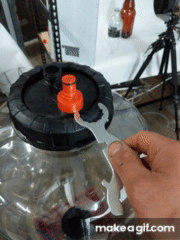Some questions based on what I've read here and elsewhere about All Rounders.
Thanks
- There's some mention of Fermzilla breaking down over time (or with use). Have you or someone you know experienced that? If so, what was the life expectancy?
- Any issues with pressure leaks from the lid, bulkheads, etc?
- How is temperature control when using a thermowell and a controller, in a freezer?
- In a freezer, with a controller, can the temperature sensor be attached to the outside of the vessel (like with a carboy)?
- Any difficulty with attaching things to the lid?
- How difficult are pressure transfers?
- Is carbonating and serving from the Fermzilla practical?








![Craft A Brew - Safale S-04 Dry Yeast - Fermentis - English Ale Dry Yeast - For English and American Ales and Hard Apple Ciders - Ingredients for Home Brewing - Beer Making Supplies - [1 Pack]](https://m.media-amazon.com/images/I/41fVGNh6JfL._SL500_.jpg)

















































